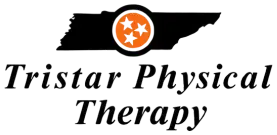Physical therapy is a vital component of recovery for individuals who have suffered from injuries, musculoskeletal disorders, or chronic pain. In recent years, a unique technique known as dry needling has come to the forefront of physical therapy. This technique involves inserting a thin needle into specific trigger points in the body to alleviate pain and improve mobility. In this article, we will explore the benefits of dry needling in physical therapy and how it can help maximize mobility.
The Benefits of Dry Needling in Physical Therapy
Dry needling is an effective way to relieve pain and restore mobility to the body. One of the significant benefits of dry needling is that it targets trigger points that may not respond to other forms of treatment. These trigger points are areas of the body that are tight, sore, or painful due to injury, overuse, or stress. By inserting a needle into these points, dry needling can help loosen the muscles and reduce inflammation. This can lead to increased range of motion, improved flexibility, and a reduction in pain.
Another advantage of dry needling is that it is a non-invasive technique that does not involve medication or surgery. This makes it an excellent option for individuals who cannot tolerate other forms of treatment or who prefer a more natural approach. Furthermore, dry needling can be combined with other physical therapy techniques, such as massage or exercise, to create a comprehensive treatment plan.
How Dry Needling Can Help Maximize Mobility
Mobility is crucial for overall health and wellness, and dry needling can help improve it in several ways. First, dry needling can reduce muscle tension and increase blood flow to the affected area. This can lead to improved flexibility and mobility, allowing individuals to move more freely without pain or discomfort.
Furthermore, dry needling can help improve posture, which is essential for proper alignment and balance. Poor posture can lead to a host of problems, including back pain, headaches, and joint pain. By targeting trigger points in the body, dry needling can help release tension and correct imbalances, allowing individuals to maintain proper posture and move more efficiently.
Finally, dry needling can help reduce pain, which can limit mobility and prevent individuals from engaging in physical activity. By targeting trigger points and reducing inflammation, dry needling can help alleviate pain and improve overall mobility, allowing individuals to engage in the activities they love without discomfort.
Dry needling is a safe and effective technique that can help maximize mobility and improve overall health and wellness. By targeting trigger points and reducing pain and tension in the body, dry needling can help individuals move more freely and comfortably, allowing them to live their best lives. If you are struggling with mobility issues or chronic pain, talk to your physical therapist about whether dry needling may be right for you.

